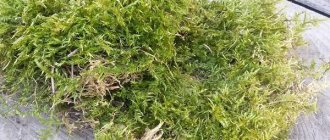There are a huge number of flowers in the world, and sometimes gardeners simply cannot choose varieties that will decorate their homes and gardens. Few people know, but in addition to ordinary peas, sweet peas also exist in nature. In turn, it not only looks beautiful, it exudes a pleasant aroma. It is precisely because of its appearance and smell that it is widely popular among gardeners who are not averse to decorating their terraces, balconies and gazebos with it.
Sweet pea or sweet pea is a climbing annual growing to a height of 1-2 m along the support.
Types and varieties of sweet peas
This plant belongs to the genus China of the Legume family. You can often hear the second name – China. Its natural habitat is the Mediterranean. The culture originates from Sicily and spreads to the island of Crete. Can often be found in central Russia.
The history of the discovery and spread of sweet peas dates back several centuries ago. It would be more accurate to say in the 18th century. It was discovered quite by accident when a Sicilian monk, while walking, came across an unknown grass under the walls of the monastery. He was amazed by the pleasant smell that the unknown flower emitted, so he collected the seeds and sent them to his good friend in England. Soon, breeders developed several new varieties and these plants conquered that era.
After that, they began to actively grow it and, thanks to the hard work of breeders and botanists, today there are more than 1000 species of sweet peas, which in turn are classified into separate groups. They all differ in:
- size;
- form;
- blossom.
At the moment, breeders continue to develop new varieties of this plant. Most often, gardeners and summer residents grow annual species. But in addition to this, it is possible to cultivate perennial varieties of peas.
The size depends on the type. From 20 cm semi-dwarf types and up to giant varieties, reaching 3.5 m in height. The plant grabs a support with its tenacious vine-like leaves and grows upward, filling the empty area.
The surprising thing is that each class has its own universal aroma . In nature, you can find flowers of any color, with the exception of yellow. Another specific quality is that one or another species cannot be crossed with each other. As a rule, growing this extraordinary flower at home does not take a particularly long time, but using this method allows you to observe earlier flowering.
Classification:
- Galaxy Group. This species was first created in the 50s of the 19th century and belongs to the late-flowering varieties. The height of plants in this group reaches 2 meters. They have from 5 to 7 double flowers. These plants are perfect for landscaping. The most famous varieties are Neptune (lilac-blue color) and Milky Way (milky-cream color). Neptune Milky Way Jumbo
- Spencer. A group of multi-stemmed plants up to 2 meters in size, which are also good for landscaping and cutting use. They consist of 3-4 simple flowers, turning into racemose inflorescences. They have a pink spectrum of color. This group includes: Warrior, Jumbo and Charlotte.
- The Early Spencer group belongs to the early varieties. These plants reach 120-150 cm, and inflorescences up to 35 cm.
Sweet pea Matukana has a new extraordinary, exciting aroma. - Duplex . The peculiarity of these plants is the presence of a double sail. One of the representatives of this group is Cream.
- Bijou. These are semi-dark late varieties. Can reach 45 cm. The group was created in 1963. The varieties differ from the rest in that they can be grown without supports.
- Cupido. A species of low-growing plants created in 1895. Their height is up to 30 cm.
Low-growing varieties of sweet peas - Cuthbertson-Floribunda . Early varieties were created in 1953. These plants reach a height of up to 2 m, and their large racemes consist of 5-6 flowers. This group includes flowers such as phlox subulate, Kennet, White Pearl.
- Royal Family . The peculiarity is that these crops are heat-resistant. They were created in 1964 and are considered the perfect version of the Cuthbertson-Floribunda. But these plants are too sensitive, so they are not grown in the cold season.
- Multiflora Gigantea. This class also belongs to the early varieties and grows up to 2.5 m. They were bred in the 60s of the last century. Excellent for cutting.
Sweet peas for cutting have a strong stem and retain freshness well in a bouquet. - Rufled is the owner of a strong stem, numbering from 6 to 10 flowers with a wavy sail in the brush. Popular varieties are Grace and Ramona.
- Intergen is a low-growing species that was bred in Russia in 1991. The length of the plants reaches 35-65 cm, which allows them to be grown without additional support.
- Lel. Introduced in the same year as Intergen. It is of medium size and reaches a height of up to 100 cm. Lucienne and Lisette are the most famous representatives of this class.
Terry sweet pea PINK PEARL
Pests, diseases
Peas are sometimes susceptible to fungal diseases, especially when the leaves of the plant are sprayed with water when watering or watered in the evening. The most common diseases include powdery mildew and downy mildew. Natural methods - the use of herbal extracts (horsetail, yarrow) can help at the initial stage of the disease.
The plant can be affected by pests:
- seed-eating rodents;
- slugs eating seedlings;
- aphid;
- thrips.
Powdery mildew
Spots appear on pea leaves covered with a white fungal coating similar to cotton wool. Infected leaves wrinkle and curl downwards. The disease usually affects peas in humid and warm summers, especially when the plant density is high. Infected parts of plants should be removed on an ongoing basis; in advanced stages of the disease, chemical agents - fungicides (Topsin, Signum) should be used.
Downy mildew
A disease caused by the fungus Bremia sp. If the leaves have reddish or brown spots on the outside and a white powdery coating on the underside, it may be downy mildew. The disease affects the leaves located in the lower part of the plant and the apical part. It is better to spray the plant with a chemical (Topsin, Signum).
Aphid
Pests that attack peas include aphids - small, green, black or yellow-green insects. Their presence is signaled by a sticky substance, which is a breeding ground for gray rot. A natural way to keep aphids away is to plant peas next to basil, mint or garlic. You can spray with garlic infusion and remove insects manually. If this does not help, you should use chemical spraying.
Slugs
These pests eat tender pea leaves. You can sprinkle material around the plants that prevents slugs from overcoming such a barrier - sawdust, ash, crushed eggshells. You can also set up traps to attract pests, such as beer traps.
How and when to plant sweet pea seedlings
It is permissible to plant the plant in both summer and winter. Planting dates are determined taking into account the region and method of planting. Before direct planting, the soil must be treated with solutions against parasites. It is recommended to sow seeds a month before planting in the ground.
You should prepare the necessary equipment, wait for a favorable time and follow the sequence of the landing algorithm.
Sowing is done at the end of March or beginning of April. The flowering period occurs in July and continues until the onset of frost.
Preparing containers and soil
First you need to select a container. Since they have a long root, plastic or peat cups with a volume of 200-250 ml are suitable. There must be drainage holes at the bottom of the container. If you don't have them, you need to do them.
To plant seeds, use universal soil or prepare the soil yourself. How to choose and prepare soil for seedlings
It should be well moistened, fertilized and drained.
In order to germinate seeds, you need:
- Place the material in a cotton cloth.
- Wrap it in cloth and put it in a plastic bag for several days. Store the package in a warm room at a temperature of 20-25 degrees.
- For better effect and faster germination of seeds, they can be soaked in solutions.
- You should check every day whether they have sprouted. And also make sure that the material does not dry out.
To increase the growth rate, you can use both organic solutions and various preparations. Organic fertilizers include aloe juice. Among the preparations you can use Zircon.
Plant growth stimulator
Sowing
Direct sowing of seedlings is carried out after careful preparation of everything necessary. To do this you need:
- Place drainage at the bottom of the container (if plastic glasses are used).
- After this, cover with soil so that 2 cm remains from the edge of the cup.
- Soak the soil well with warm water.
- Make small holes and place the seed there.
- Fill the top with a small amount of soil and water again.
- Cover the glass with a plastic bag to create a greenhouse effect.
Sweet pea shoots
Rules for growing perennial plants
The seeds of perennial sweet peas, the photo of which is presented below, germinate slowly and for a very long time. There are 2 types of chin - broad-leaved and large-flowered, which can be planted in a private area and admire this climbing plant for a long time. Broadleaf has a large mass of leaves and is used in agriculture as a fodder crop. She has faded dirty pink flowers and they have no scent. The large-flowered chin belongs to the decorative climbing plants; it blooms profusely with large flowers of pastel colors without a smell.
To obtain perennial seedlings, the seeds are soaked in early February and sown in light nutrient soil under a film to create a greenhouse effect and prevent the soil from drying out. After the emergence of full shoots, the film is removed and the plants are fed with nitrogen for active growth. To do this, take 1 g of saltpeter per liter of water and quickly shed the soil so as not to burn the roots. After the formation of 2-3 true leaves, the plant begins to harden and after the end of frost it is planted in the ground. Such early planting allows the bush to get stronger in the first year of its life over the summer and strengthen the root system. During the first season, a poorly growing plant can be watered with a nitrogen solution at the rate of 1 s. l. for 10 liters of water.
https://youtube.com/watch?v=EiarillLMh1c
Perennial sweet peas, which can be planted on the south or west side of a building, love bright light and a lot of moisture. The chosen place can be slightly shaded, then the vines will grow more actively to reach a place actively illuminated by the sun.
The lashes need good support, so a special wall is created for the bed from any kind of mesh materials so that the lashes of the plant do not wrinkle or rot.
Grilles of open gazebos, pergolas, verandas and other temporary buildings located on the site are suitable as supports. Everything that you want to hide from prying eyes in the summer and decorate with light flowers can be hidden under the rank of a perennial.
You should not expect wild flowering in the first year of life from a perennial plant. First, a small bush grows from a pea, and it can be transplanted to a permanent place at the end of summer or next spring. The plant overwinters well, and, gradually increasing its root system, every year it grows flowering vines in the summer.
In order for the plant to comfortably overwinter, its vines are cut off at the root, and the growing area is covered with sawdust or covered with corrugated cardboard. These two types of shelter will prevent the ground from thawing during short-term winter thaws.
The perennial differs from annual sweet pea varieties in that its flowers have no aroma and the color of their petals is paler. A mature bush looks very beautiful and blooms from mid-June until the first frost.
Caring for seedlings at home
After sowing, the plant needs careful care. And therefore, compliance with all measures and rules provides a favorable environment for growth. Sprouts appear a few weeks after planting. Nodules begin to form with a slight temperature difference, so the seedlings are transferred to a cooler room and the cover is removed. The temperature should be from +15 to +17 degrees.
Some tips:
- It is advisable to place the seedlings on the south side so that the plant does not feel the lack of light. If there is not enough natural light, then you need to use artificial lighting for 2-3 hours every day.
- The soil should be constantly moist, so it is advisable to water it every week. To prevent drying out, you can cover the seedlings.
- Monitor the amount of water, because if you water too often, the roots may rot.
As for picking, the answer is simple. Not recommended!
Due to the fact that it is very sensitive, picking should be out of the question. Any manipulations carried out with its roots can lead to injury, so it is better not to touch the root system.
But feeding won't hurt. In this case, mineral fertilizers are perfect. Kemira solution has a beneficial effect on growth.
When the first three leaves appear, pinch the top to increase the shoots.
With proper and timely care and compliance with all rules, you can easily achieve favorable results. And after that, feel free to move on to the next part: planting in open ground.
When the first three leaves appear, pinch the top to increase shoots
Advice from flower growers
To weave beautiful carpets from sweet peas on your site, you can use the experience of other flower growers:
- When the first leaves appear, the seedlings need to be thinned out at intervals of 15 cm.
- To enhance the aroma of peas, they are planted in elevated places, like a hanging plant.
- Before direct sowing into the ground, the peas are rolled on sandpaper, destroying the hard skin.
- It is better not to cultivate sweet peas through seedlings: due to lack of light, the sprouts become elongated and the fragile roots are easily broken.
- When subcrusting peas, mineral water is alternated with organic matter.
When to transplant seedlings into open ground
As soon as the ambient temperature stabilizes within 15 degrees, you can begin transplanting the seedlings.
However, if the seedlings have already formed buds or flowers before planting, they will need to be removed. A week or two before planting in the soil, it is recommended to carry out hardening procedures so that the seedlings gradually get used to the outside temperature. Every day it is necessary to increase the duration of stay in the air. As soon as the young seedlings stand outside for a day, they can be transplanted into prepared soil. Rules:
- Seedlings should be planted in holes at a distance of 25 cm from each other.
- For tall varieties, supports must be prepared.
- Annual varieties should be disposed of in the fall. It should be remembered that if you plant annual varieties, they can only be planted again after 5 years.
- Since the seedlings are still too sensitive and are not fully accustomed to changing ambient temperatures, it is advisable to protect them from the sun in the first few days. To do this, it is enough to build a canopy to protect the plants from ultraviolet rays.
As soon as the ambient temperature stabilizes within 15 degrees, you can begin to transplant the seedlings into open ground.
Collecting seeds
Timely removal of faded inflorescences prolongs flowering and improves the overall decorative appearance of the plant. If there is a desire to acquire your own seeds , then some part of the inflorescences is left . pods form in their place . When fully ripe, they acquire a light brown color.
After collection, the seeds are dried for several days and packaged for storage in paper bags or canvas bags. They remain viable for a long time, up to 5-8 years. So your garden will definitely not be left without the colorful variety of sweet peas and its amazing aroma .
Kelvin Townsend / Flickr.com
Discuss the video
Planting before winter
An amazing phenomenon is that sweet pea seeds can be planted before winter. The seeds are resistant to low temperatures, get along well in cold soil and begin to germinate with the onset of spring.
Such flowers have a great advantage. Firstly, these sprouts harden over the winter and become resistant to temperature changes. Secondly, they bloom more luxuriantly and brightly in the summer. And the emanating aroma intensifies.
The planting system in winter is simple:
- A couple of weeks before frost, the ground is dug up and cleaned.
- When cold weather sets in, shallow furrows are made in the garden bed.
- Seeds are planted there at a distance of 5 cm and covered with earth.
- Then the bed is rolled up and left there for the winter.
And in the spring you will be able to observe the shoots and anticipate how the gardens will soon bloom beautifully and luxuriantly.
Sweet pea shoots in spring when sown before winter
Reproduction
Sweet peas are propagated by seeds. Seeds must be collected selectively, after the pods have turned yellow, without allowing them to burst. Delay can lead to big losses.
Sow this beautiful flower near your family vacation spot and admire its unusual blooms and fragrant aroma.
By following all the above rules, you can achieve flowering of sweet peas before the first frost, and you will be rewarded with full-fledged seeds even in bad summer.
Caring for flowers in summer
First of all, it needs to be protected from drying out, waterlogging, sudden changes in temperature and strong ultraviolet rays. Having eliminated all these damaging factors, there is no doubt that the plant will not get sick and will bloom for a long time.
It is enough to follow a few rules:
- Water regularly with plenty of water and monitor soil moisture. Every week 1 m2 is watered with 30-35 liters of water. If the bushes are intended to collect seeds for the next season, they are watered less often.
- Weed the soil from time to time.
- Watch the support.
- Provide fertilizing. Without it, the condition of the bushes will not worsen, but it is preferable to carry it out. Fulfilling this point will not be superfluous. Feeding is carried out in 2 stages. Before flowering begins, it is fertilized with potassium sulfate. The second feeding occurs at the height of flowering. Apply Agricol or Rosa.
- Protect from pests.
The bushes themselves can cling to the underlying ledges, so in order for it to grow upwards calmly, it is planted next to fences, gazebos and terraces. Supports are also installed next to the plants if they are required.
It cannot be pruned. Only one procedure is carried out - cutting off wilted flowers.
How to deal with powdery mildew
Those who are interested in sweet peas and their care should familiarize themselves with the diseases of this plant, as well as ways to combat them. Powdery mildew appears on the leaves of young plants in the form of a whitish-gray coating, which over time turns gray-brown. There are several folk remedies to combat powdery mildew:
- Dissolve five grams of laundry soap and baking soda in one liter of water. Treat the infected areas with this solution twice, with an interval of six days.
- Add 0.5 cups of wood ash to boiling water. After two days, add a prepared solution of five grams of laundry soap and a small amount of water to this mixture, mix the solution thoroughly before using. If the plant is severely damaged by powdery mildew, then it should be treated several times, with a break of five to six days.
- A simpler and quite effective method is the use of various weeds. To do this, fill half a bucket with various finely chopped weeds and pour hot water over them. The prepared mixture should be in the fermentation process for several days, after which it should be filtered through cheesecloth or other filter material. Treat affected sweet pea plants in the evening.











